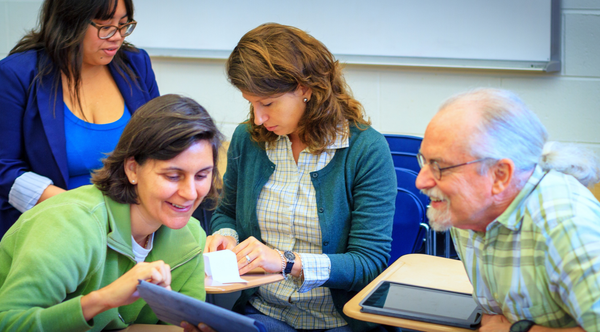LMS Gamification Examples: Engaging Learners Through Game Mechanics

Educators constantly face the challenge of keeping students engaged in their learning journeys. Learning Management Systems (LMS) have become essential tools in managing and delivering educational content. However, just delivering content is not enough. The need to make learning more interactive and engaging has led to the rise of gamification in LMS platforms.
Gamification is the process of applying game-design elements and principles in non-game contexts, such as education. In an LMS, gamification transforms traditional learning experiences into exciting, dynamic, and rewarding activities, boosting both motivation and engagement.
What Is Gamification in an LMS?
Before we dive into specific examples, it’s important to clarify what gamification means in the context of an LMS. Gamification involves incorporating game-like elements—such as points, badges, leaderboards, levels, and rewards—into the LMS itself.
When used effectively, gamification taps into the natural human desire for competition, achievement, and recognition. It makes the learning process more enjoyable and encourages students to achieve their learning goals.
Let’s explore several gamification strategies teachers can use within an LMS to engage their students.
Examples of Gamification in an LMS
Now we understand the concept, here are some popular examples of how you can gamify your LMS.
Points and Rewards Systems
A foundational element of gamification is the points and rewards system. Points can be earned by students for completing various tasks, such as finishing a quiz, participating in a discussion forum, or submitting assignments. This system provides immediate feedback and gives students a sense of accomplishment.
How It Works for Teachers and Students
- Teachers: Teachers can set up a point system within the LMS, where students earn points for completing specific activities. They can also set different weights for various tasks based on their difficulty or importance. For example, completing a weekly quiz might earn 10 points, while submitting a final project could earn 50 points.
- Students: For students, accumulating points gives them a clear indication of their progress. As they see their points increase, it creates a sense of accomplishment, motivating them to continue working hard.
Points can be tied to virtual rewards—for example, students might unlock a new avatar or badge after earning a certain number of points. These virtual rewards add an extra layer of motivation and help sustain long-term engagement.
Leaderboards
Leaderboards are another popular gamification feature in many LMS platforms. By displaying the names of students who have earned the most points or achieved the highest grades, leaderboards introduce an element of friendly competition.
How It Works for Teachers and Students
- Teachers: Educators can configure leaderboards based on different metrics, such as overall course performance or specific tasks (e.g., top quiz scorers). Some LMS platforms also allow teachers to create custom leaderboards for different groups or teams.
- Students: For students, seeing their names on a leaderboard can be highly motivating. It gives them public recognition for their achievements and encourages them to strive for higher performance. Leaderboards also drive peer-to-peer engagement, as students may discuss their rankings with their classmates and challenge each other to improve.
It’s important to note, however, that leaderboards should be used thoughtfully. While some students may thrive on competition, others might feel discouraged if they fall too far behind. Therefore, it can be helpful to create tiered leaderboards (e.g., within smaller groups) to ensure that students at all levels feel included.
Badges and Achievements
Badges are virtual symbols of achievement that students can earn for completing specific tasks or reaching certain milestones. They act as a form of recognition and provide tangible proof of a student’s progress and accomplishments.
How It Works for Teachers and Students
- Teachers: Badges can be awarded for a wide range of activities, such as completing a module, mastering a skill, or showing improvement in a particular area. Some LMS platforms allow teachers to create custom badges, giving them the flexibility to align badges with specific learning goals.
- Students: For students, earning badges offers a sense of achievement and boosts confidence. Badges are visual reminders of their progress and give them something to work toward. Over time, students can build a “collection” of badges, which serves as a digital portfolio of their accomplishments. Some LMS platforms allow students to share their badges on social media or professional networks, further incentivizing participation.
Levels and Progression
Introducing levels and progression systems into an LMS is a powerful way to structure the learning experience. Just like in video games, students can advance through levels as they complete assignments or master new skills. This creates a sense of journey and discovery.
How It Works for Teachers and Students
- Teachers: Teachers can design course materials so that they are unlocked progressively. For example, students might need to reach “Level 2” by completing all Level 1 assignments before they can access more challenging tasks. Teachers can also use levels to scaffold the learning process, making it easier for students to track their progress.
- Students: For students, leveling up gives a clear indication of their growth. It adds an element of challenge and reward as they move from beginner to more advanced stages. Levels can be tied to virtual rewards, like unlocking new content, exclusive resources, or special privileges (such as selecting a topic for the next assignment).
This concept of progression can be particularly effective for mastery-based learning, where students are required to demonstrate full understanding before moving on to more complex topics.
Quests and Challenges
Quests and challenges introduce a narrative-driven approach to gamified learning. Instead of simply completing assignments, students embark on “quests” that guide them through various tasks with specific goals and outcomes. This adds a sense of purpose and adventure to the learning process.
How It Works for Teachers and Students
- Teachers: In an LMS, teachers can create quests that consist of several interconnected activities. For instance, students might need to complete a series of challenges, such as research tasks, quizzes, and group projects, in order to solve a mystery or achieve a learning goal. Teachers can incorporate different media, such as videos, readings, and puzzles, to keep the quests diverse and engaging.
- Students: For students, quests transform their learning experience into a journey with a narrative structure. They feel more invested in completing tasks when those tasks are part of a larger quest. Quests can be designed to allow for multiple paths to success, giving students a sense of agency in how they approach the challenge.
Quests can also be collaborative, where students team up to solve problems or achieve group goals, further fostering teamwork and communication skills.
Timed Challenges and Rewards
Timed challenges add urgency and excitement to learning tasks. Whether it’s a time-limited quiz or a group project with a countdown clock, these challenges introduce an element of excitement and encourage quick thinking.
How It Works for Teachers and Students
- Teachers: Educators can integrate timed challenges into their LMS to create mini-competitions or timed assessments. For example, a weekly timed quiz can be set up, where students have 10 minutes to answer all the questions. Teachers can offer bonus points or rewards for students who complete the challenge within the time limit, adding an extra incentive to perform well.
- Students: For students, timed challenges spark a sense of urgency and competition. Completing a timed quiz successfully can be thrilling, and rewards for quick completion add extra motivation to participate. Timed challenges can also promote better time management skills as students learn to work within deadlines and prioritize tasks efficiently.
Collaboration Through Team-Based Games
Not all gamification needs to be competitive; it can also be highly collaborative. Team-based games within an LMS encourage students to work together to achieve common goals, combining individual strengths to solve problems or complete tasks.
How It Works for Teachers and Students
- Teachers: In a team-based system, educators can divide students into groups and assign team challenges or projects. For example, each team could work on a complex problem that requires group brainstorming and research. Teachers can assign points or rewards based on team performance, and teams can compete for top spots on group leaderboards.
- Students: Team-based games promote collaboration and communication among students. It encourages them to rely on their peers, share knowledge, and work together toward a common objective. This also helps develop essential teamwork skills, which are valuable beyond the classroom.
Drawbacks to Gamified Learning
While gamification in education can enhance engagement and motivation, it may also lead to superficial learning rather than deep understanding. When students focus primarily on earning points, badges, or leveling up, they prioritize these rewards over the actual learning process. This could diminish intrinsic motivation, where students value learning for its own sake, and instead foster extrinsic motivation, where the end goal is to achieve game-like rewards. Over time, this shift can reduce students' ability to engage in self-directed learning and develop a genuine interest in the subject matter, especially when the external rewards are removed.
Additionally, gamification may not be equally effective for all students, potentially reinforcing existing inequalities. Not all learners are motivated by competition or rewards, and some may find gamified environments overwhelming or distracting. This can exacerbate differences in learning preferences and lead to disengagement for students who do not thrive in gamified settings. Moreover, designing effective educational games requires significant time and resources, and poorly implemented gamification can trivialize complex subjects, reducing learning to a set of simplistic tasks rather than fostering critical thinking and problem-solving skills.
Enhancing Engagement with Gamified Learning
The integration of gamification into an LMS may transform traditional learning into a more engaging, interactive, and rewarding experience, but it is important to consider all aspects of the experience you are trying to deliver.
By incorporating game-like elements such as points, badges, leaderboards, and quests, teachers can create a dynamic learning environment that may motivate students to participate actively.



